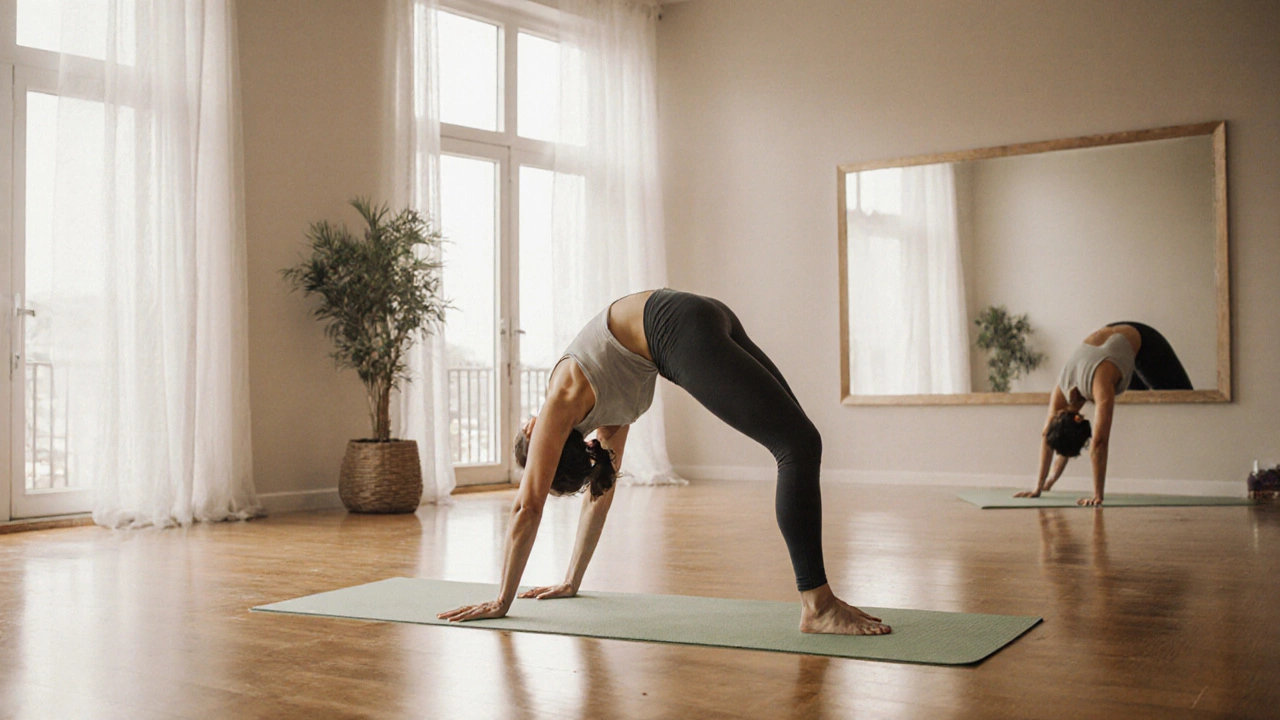Yoga Fitness: Blend of Strength, Flexibility, and Mindfulness
When talking about Yoga fitness, the practice of using yoga as a tool to improve overall physical conditioning, balance, and mental clarity. Also known as Yoga for fitness, it combines traditional poses with modern training principles to help you move better, feel calmer, and stay healthier.
One of the gentlest ways to start is restorative yoga, a low‑impact style that focuses on long holds, deep breathing, and recovery. It pairs nicely with HIIT, short bursts of high‑intensity effort followed by brief rest periods because the cardio push builds heart health while restorative sessions aid recovery. Adding cardio workouts, steady‑state or interval‑based aerobic activity that burns calories and improves endurance rounds out the mix, giving you a full‑body approach that targets strength, stamina, and flexibility. Many people also support their regimen with protein shakes, nutrient‑dense drinks that aid muscle repair after intense sessions, especially when training multiple times per week.
These elements aren’t random—they form a logical network. Yoga fitness encompasses restorative yoga, while restorative yoga requires gentle stretches and breath work. HIIT influences cardio performance by boosting metabolism, and cardio improves the oxygen delivery needed for deeper yoga poses. Protein shakes, in turn, help the muscles recover from both HIIT and cardio, making each subsequent practice more effective. This web of relationships explains why you’ll see overlapping topics across the articles below.
Why This Collection Matters
If you’ve ever wondered how long it takes to see results, the post “How Long Does Yoga Take to Work?” breaks down a realistic timeline—from the first class to noticeable flexibility gains after eight weeks. For those who prefer short sessions, “Is 20 Minutes of Yoga a Day Enough Exercise?” shows how a quick daily practice can still move the needle on stress reduction and joint health. The guide on “What’s the Gentlest Form of Yoga?” helps beginners pick a safe entry point, while “Is Yoga Enough for Fitness?” tackles the big question of whether yoga alone can replace traditional gym work.
On the cardio side, the article “Which Cardio Exercise Is the Best for Burning Calories?” compares HIIT, steady‑state running, and cycling, giving you numbers to decide what fits your schedule. “What Happens to Your Body with 30 Minutes of Daily Cardio” pulls together heart‑health benefits and calorie‑burn data, making it easy to plan a balanced week. If you’re chasing rapid fat loss, the “2‑Week Fat‑Loss Plan” and “How to Lose 20 Pounds Fast” provide structured diet‑exercise combos that pair well with the yoga‑HIIT blend discussed earlier.
Nutrition doesn’t get left out either. The nighttime protein shake guide explains when casein versus whey works best for muscle repair, and the “How Many Protein Shakes Can You Safely Drink Daily?” article answers common safety concerns. Together, these pieces show how a thoughtful eating plan supports the physical demands of both yoga and high‑intensity training.
All of these topics share a common thread: they aim to give you practical, evidence‑based steps you can apply today. Whether you’re a complete beginner, a busy professional looking for 20‑minute routines, or an athlete seeking a holistic edge, the mix of yoga, cardio, HIIT, and nutrition will help you build a sustainable habit.
Below you’ll find a curated set of articles that dive deeper into each of these areas. Expect clear timelines, sample workouts, nutrition tips, and myth‑busting facts that cut through the noise. Use them as a toolbox—pick what fits your goals, mix the parts you like, and start shaping a fitter, calmer you.
Ready to explore? Scroll down to see the full list of guides, each packed with actionable advice you can put into practice right now.

How Quickly Can Yoga Transform Your Body?
Maeve Larkspur Oct 15 0Discover how quickly yoga can reshape your body, the timeline for flexibility, strength, and composition changes, and a proven 4‑week plan to accelerate results.
More Detail